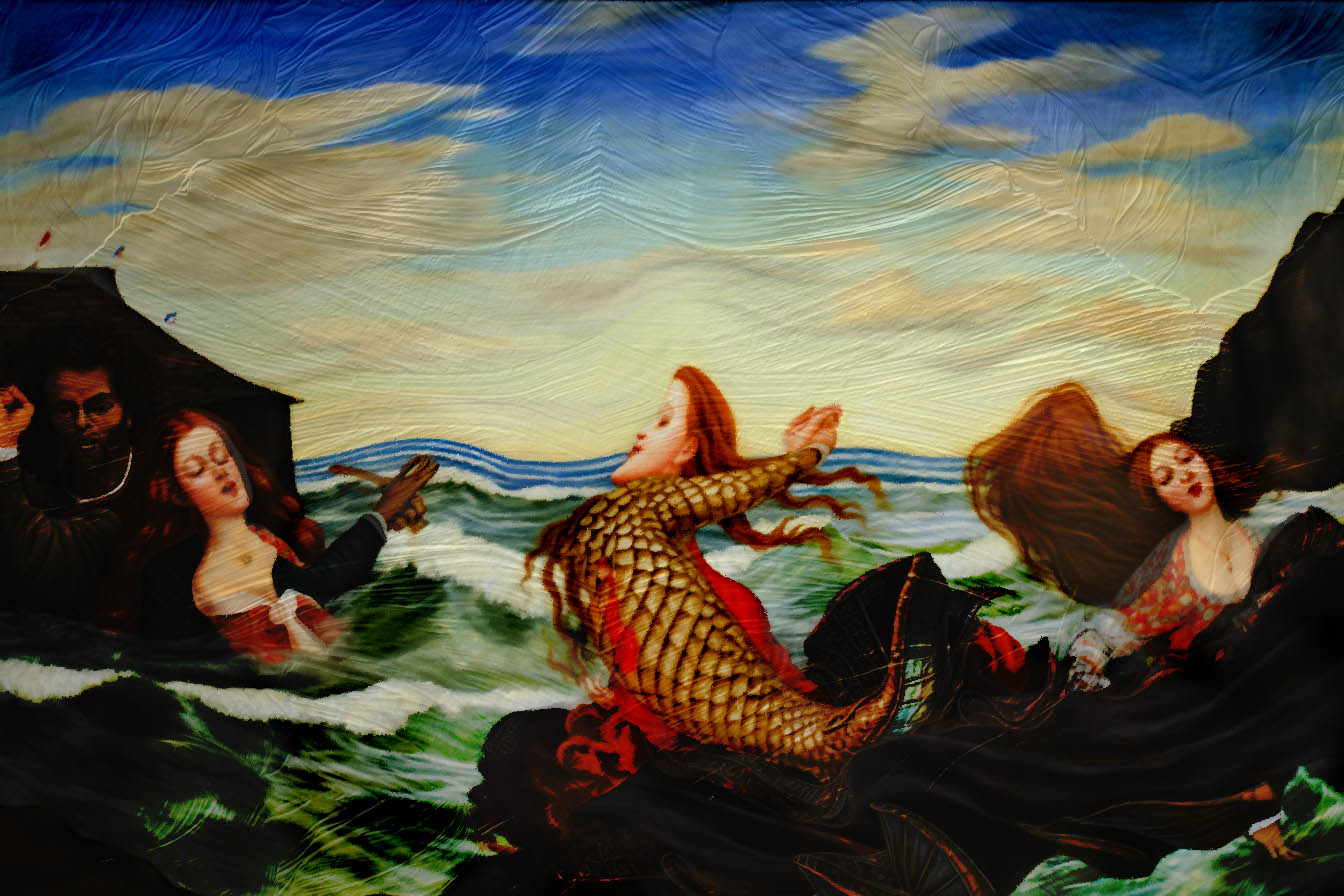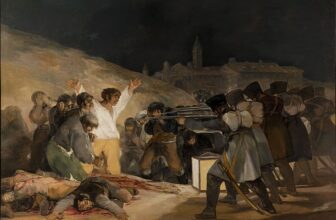
Original Artwork Fine art Ai
Exploring 20 Famous Artworks of a Golden Age
The Renaissance, a period of cultural and artistic rebirth that spanned from the 14th to the 17th century, remains one of the most influential eras in the history of art. During this time, Europe witnessed a flourishing of artistic expression, scientific advancement, and humanistic thought. In this article, we will explore 20 famous artworks that define the essence of the Renaissance period, showcasing the brilliance and innovation of some of the most celebrated artists of all time.
- “Mona Lisa” by Leonardo da Vinci: Regarded as the epitome of Renaissance art, Leonardo da Vinci’s enigmatic portrait of “Mona Lisa” captivates viewers with its mysterious smile and intricate detail. Painted between 1503 and 1506, this masterpiece showcases da Vinci’s mastery of techniques such as sfumato, a gradual blending of tones, and his ability to capture the essence of human emotion.
- “The Last Supper” by Leonardo da Vinci: Another iconic work by da Vinci, “The Last Supper,” depicts the biblical scene of Jesus sharing his final meal with his disciples. Executed between 1495 and 1498, the painting is renowned for its composition, use of perspective, and the intricate expressions of the figures, revealing da Vinci’s keen observation of human nature.
- “The Creation of Adam” by Michelangelo: Adorning the ceiling of the Sistine Chapel in Vatican City, Michelangelo’s “The Creation of Adam” is a profound portrayal of the biblical story of God breathing life into Adam. Completed in 1512, the fresco displays Michelangelo’s exceptional skill in rendering the human form, conveying a sense of divine energy and spiritual significance.
- “The School of Athens” by Raphael: Commissioned by Pope Julius II, Raphael’s “The School of Athens” is a fresco that depicts the great philosophers and intellectuals of classical antiquity, symbolizing the pursuit of knowledge and wisdom. Painted between 1509 and 1511, the artwork showcases Raphael’s talent for harmonious composition, classical style, and his ability to bring together diverse personalities.
- “The Birth of Venus” by Sandro Botticelli: A captivating representation of the Roman goddess Venus emerging from the sea, “The Birth of Venus” exemplifies Botticelli’s mastery of graceful figures, flowing drapery, and delicate details. Created around 1485, the painting embodies the Renaissance fascination with mythology, beauty, and the revival of ancient art.
- “The Sistine Madonna” by Raphael: Considered one of Raphael’s most iconic works, “The Sistine Madonna” portrays the Virgin Mary holding the Christ Child, surrounded by Saint Sixtus and Saint Barbara. Painted in 1512-1513, the artwork’s composition, color palette, and emotional depth exemplify Raphael’s talent for conveying spiritual beauty and grace.
- “The Tempest” by Giorgione: Giorgione’s “The Tempest” is a mysterious and atmospheric landscape painting created around 1508. The work features a stormy sky, a nude woman breastfeeding an infant, and a soldier standing nearby. It is renowned for its enigmatic narrative and evocative use of light and shadow, representing a departure from traditional subject matter of the time.
- “The Creation of Eve” by Titian: Titian’s “The Creation of Eve” is a stunning depiction of the biblical story of Adam and Eve. Completed in 1550, the painting showcases Titian’s remarkable use of color, texture, and sensuousness. It captures the tender moment when God presents Eve to Adam, conveying their vulnerability, beauty, and the divine spark of life.
- “The Adoration of the Magi” by Albrecht Dürer: A celebrated Northern Renaissance artist, Albrecht Dürer created “The Adoration of the Magi” in 1504. The painting showcases Dürer’s meticulous attention to detail and his innovative approach to perspective. It depicts the biblical scene of the Three Wise Men paying homage to the infant Jesus, showcasing Dürer’s skill in capturing intricate textures and expressions.
- “The Last Judgment” by Michelangelo: Covering the altar wall of the Sistine Chapel, Michelangelo’s “The Last Judgment” is a monumental fresco created between 1536 and 1541. The artwork depicts the second coming of Christ and the final judgment of souls. It is notable for its powerful composition, dramatic figures, and the complexity of emotions depicted.
- “Primavera” by Sandro Botticelli: Botticelli’s “Primavera” (or “Allegory of Spring”) is a captivating allegorical painting completed around 1482. The artwork depicts a group of mythological figures in a lush garden, embodying the ideals of love, beauty, and fertility. Botticelli’s use of vibrant colors and delicate figures captures the essence of the Renaissance fascination with classical mythology and the celebration of nature.
- “The Annunciation” by Jan van Eyck: Jan van Eyck’s “The Annunciation” is a masterpiece of Northern Renaissance art, completed in 1434. The painting portrays the moment when the angel Gabriel announces to the Virgin Mary that she will bear the son of God. Van Eyck’s meticulous attention to detail, luminous colors, and intricate symbolism showcase his technical skill and devotion to religious themes.
- “The Arnolfini Portrait” by Jan van Eyck: Another renowned work by Jan van Eyck, “The Arnolfini Portrait” was painted in 1434 and depicts the Italian merchant Giovanni di Nicolao Arnolfini and his wife in a domestic setting. This iconic artwork is celebrated for its meticulous rendering of textures, intricate details, and symbolic elements, revealing van Eyck’s mastery of oil painting.
- “The Temptation of St. Anthony” by Hieronymus Bosch: Hieronymus Bosch’s “The Temptation of St. Anthony” is a surreal and visionary painting executed around 1500. It depicts the torment and temptations faced by the saint, showcasing Bosch’s imaginative and fantastical style. The intricate details and bizarre creatures in the artwork invite viewers into a world of symbolic and psychological complexity.
- “The Assumption of the Virgin” by Titian: Titian’s “The Assumption of the Virgin” is a monumental altarpiece created between 1516 and 1518. The painting portrays the Virgin Mary ascending to heaven, surrounded by a radiant ensemble of figures. Titian’s use of color, movement, and theatricality in this masterpiece showcases his ability to create a sense of awe and spiritual grandeur.
- “The Entombment” by Caravaggio: Caravaggio’s “The Entombment” is a powerful and emotionally charged depiction of the burial of Christ. Painted in 1603-1604, the artwork showcases Caravaggio’s innovative use of light and shadow, known as chiaroscuro, to create a dramatic and naturalistic scene. The figures’ expressions and gestures convey a deep sense of grief and loss.
- “The Tempest” by Giorgione: Tiziano Vecellio, known as Titian, completed a painting titled “The Tempest” in the early 16th century. This enigmatic work showcases a stormy landscape with a female figure nursing an infant, while a male figure stands beside her. The painting’s ambiguity and atmospheric quality invite various interpretations, reflecting the Renaissance fascination with poetic and symbolic subjects.
- “The Battle of San Romano” by Paolo Uccello: Paolo Uccello’s “The Battle of San Romano” is a series of three panels painted between 1435 and 1455. These artworks depict the historical battle scenes of the Florentine victory over Sienese forces. Uccello’s use of perspective, vibrant colors, and attention to detail create a sense of dynamic movement and convey the spirit of warfare during the Renaissance period.
- “The Holy Trinity” by Masaccio: Masaccio’s “The Holy Trinity” is a pioneering work in the development of perspective and realistic depiction in Renaissance art. Painted in 1425, the fresco presents the Trinity (God the Father, the crucified Christ, and the Holy Spirit) in a chapel setting. Masaccio’s mastery of three-dimensional space and anatomical accuracy set a new standard for naturalistic representation.
- “The Annunciation” by Fra Angelico: Fra Angelico’s “The Annunciation” is a delicate and serene depiction of the biblical event in which the angel Gabriel announces to the Virgin Mary that she will conceive the Son of God. Painted between 1438 and 1445, the artwork showcases Angelico’s meticulous attention to detail, vibrant colors, and his ability to convey a sense of spirituality and tranquility.
The Renaissance period produced an extraordinary array of masterpieces that continue to inspire and captivate audiences to this day. Through the works of Leonardo da Vinci, Michelangelo, Raphael, Botticelli, and many other talented artists, we glimpse into a time of profound creativity, intellectual exploration, and cultural transformation. These 20 famous artworks represent the pinnacle of the Renaissance era, showcasing the artists’ technical mastery, innovative techniques, and profound expressions of human emotion, spirituality, and the beauty of the natural world.






